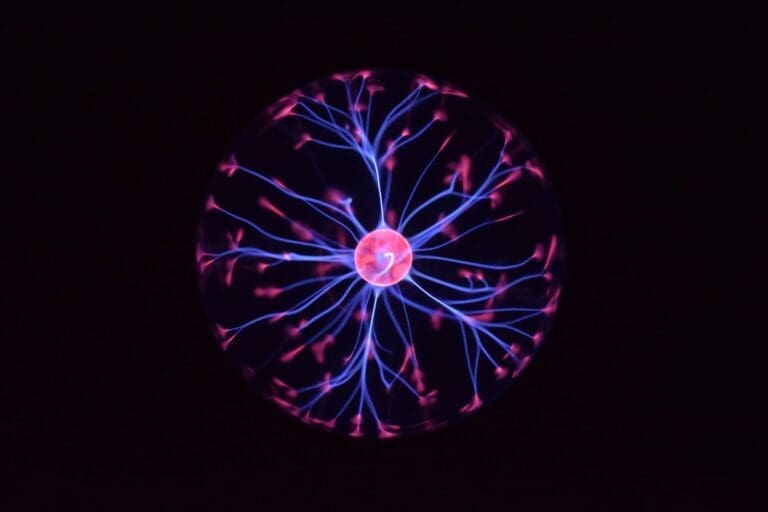Mental organization that works when having both work and side hustles
I was sitting in a client meeting while simultaneously thinking about three other projects, a looming deadline, and that interesting article I’d half-read earlier. My notes from the meeting looked comprehensive, but my mind felt like a browser with 47 tabs open.
Despite having a sophisticated note-taking system in place, I still felt mentally scattered.
Sound familiar?
In previous articles, I’ve covered my 3-part note-taking system (quick notes, save for later, and second brain), explored quick note apps like Apple Notes and Google Keep, and dived into second brain tools like Obsidian and Craft.
But there’s a crucial piece I haven’t addressed yet: how to actually sort through the mental clutter once it’s captured.
Because here’s what I’ve learned as both a project manager and someone building side businesses: capturing information is only half the battle. The real challenge is processing it in a way that creates clarity instead of more chaos.
In this article, I’ll share my framework for sorting through mental clutter – a system that has helped me manage multiple client projects while building my own business on the side.
This isn’t about another app or tool, but rather about the mental processing that happens between capture and retrieval.
The mental clutter problem
My brain feels most cluttered when I’m juggling multiple responsibilities. As a project manager at a digital agency, I coordinate with designers and developers while keeping clients happy.
After hours, I’m working on my own entrepreneurial ventures. Add in personal responsibilities, and my mind becomes a jumbled mess of competing priorities, half-formed ideas, and information fragments.
Mental clutter manifests in several problematic ways:
- Decision paralysis: When too many thoughts compete for attention, making even simple decisions becomes exhausting
- Context switching costs: Jumping between different mental contexts drains cognitive energy
- Idea leakage: Valuable insights slip through the cracks because they aren’t properly processed
- Stress amplification: The feeling of disorganization creates additional anxiety that compounds existing stress
The standard advice is to “write everything down,” which is why I’ve invested so much in my note-taking system. But I discovered something surprising: comprehensive note-taking sometimes creates more mental clutter, not less.
That’s because simply capturing information doesn’t automatically organize it in your mind. You can have the most sophisticated note-taking setup and still feel mentally scattered if you’re missing the crucial processing step.
Why capturing isn’t enough
My note-taking system was excellent at capturing information. I had quick notes for fleeting thoughts, a “save for later” system for interesting content, and a well-structured second brain for permanent notes. Yet I still felt overwhelmed.
The problem became clear when I realized I had thousands of captured notes but struggled to find mental clarity. I was collecting more than I was processing.
This is what I call the “collector’s fallacy” in note-taking – the mistaken belief that capturing information is the same as understanding and integrating it. It’s like filling your house with books you never read or tools you never use.
Here’s how I knew my system was failing me:
- I had meeting notes I never revisited
- I saved articles I never fully processed
- I created project documentation that didn’t actually help me think more clearly
The missing element wasn’t better capture tools but a systematic approach to processing the information I’d already collected. Without this, my notes became digital clutter – organized on the surface but mentally taxing underneath.
The key insight came from my project management experience: in project workflows, there’s always a processing step between task creation and task completion. The same principle needed to apply to my mental workflows.
The mental processing framework
The breakthrough came when I started treating my thoughts like project tasks that needed processing, not just capturing. I’ve taken a copywriting framework (QUEST) and converted it into a mental processing framework based on project management methodologies that has transformed how I handle information.
Here’s the step-by-step approach I now use:
- Qualify: Determine the nature and importance of each thought or piece of information
- Understand: Grasp the context and implications fully
- Evaluate: Decide what action or integration is needed
- Solve: Process the thought into the appropriate system
- Test: Verify that the mental load has been lifted
Let me break this down with a real example from my work:
During a client call, I had the thought that their project might benefit from a different technical approach than what we initially discussed. In the past, I would have just quickly noted “Consider alternative tech stack?” and moved on, leaving an ambiguous, anxiety-producing thread hanging in my mind.
With my new processing framework:
- Qualify: This is a potentially important insight that could impact project success
- Understand: The current approach may increase development time and create maintenance issues
- Evaluate: Need to research alternatives and discuss with the development team
- Solve: Create a specific research task in our project management tool with clear parameters and deadline
- Test: Confirm that I no longer feel anxious about this idea since it’s been properly processed
The key difference is that I’m not just capturing the thought – I’m working through it to completion, even if the completion is just a properly defined next step.
This framework works with any note-taking system or app. I use it with my existing 3-part system:
- For quick notes, I process them at the end of each day
- For “save for later” content, I process items before adding them to my permanent system
- For second brain notes, I process them as I create them, ensuring they’re immediately useful
The result is a much lighter mental load, even though I’m handling the same amount of information.
Implementation in daily workflow
Implementing this mental processing framework requires intentional time and space in your workflow. I’ve found that trying to process thoughts on the fly usually results in half-measures that don’t actually reduce mental clutter.
Instead, I’ve built structured processing sessions into my daily and weekly schedules:
- Daily processing (15-20 minutes): At the end of each workday, I process quick notes and thoughts captured that day
- Deep processing (60-90 minutes): Once a week, I process more complex ideas and “save for later” content
- Project-specific processing (30 minutes): After significant meetings or work sessions, I immediately process related thoughts
The key is treating these processing sessions as non-negotiable appointments with yourself. They’re as important as client meetings because they maintain your mental clarity.
Here’s what my daily processing session looks like in practice:
- Review all quick notes captured that day
- For each note:
- Apply the QUEST framework (Qualify, Understand, Evaluate, Solve, Test)
- Either discard, act on, delegate, schedule, or integrate the information
- Verify that the thought no longer creates mental friction
- Clear the quick note inbox completely
One particular technique that’s been game-changing is what I call “thought completion.” For any thought that feels unresolved, I ask: “What needs to happen for this thought to be completed?” Then I create that specific next step or decision.
For my entrepreneurial work, I’ve found that separate processing sessions work best. Mixing work and side hustle processing can create its own form of mental clutter. Instead, I have dedicated time blocks for processing business-related thoughts, usually in the evenings or weekend mornings.
The goal isn’t to eliminate all mental activity but to ensure thoughts are processed to completion rather than left hanging in a perpetual state of uncertainty.
Maintaining mental clarity long-term
Creating mental clarity once is relatively easy. Maintaining it over weeks, months, and years is the real challenge. That’s why systematic maintenance is essential.
I’ve developed several practices that help maintain long-term mental clarity:
- Weekly review: A comprehensive processing session that clears any accumulated mental clutter
- Monthly pruning: Removing unnecessary information and simplifying systems
- Quarterly reset: A deeper evaluation of my entire information management approach
The weekly review is particularly crucial. Every Friday afternoon, I spend 60-90 minutes processing any remaining thoughts from the week and preparing my mind for the week ahead. This practice has single-handedly prevented the buildup of mental clutter that used to plague me.
During this weekly session, I:
- Process all remaining quick notes
- Review my “save for later” queue and process at least 5 items
- Check for any incomplete thought processes or loose ends
- Identify any recurring thought patterns that might indicate a systemic issue
This connects directly back to my 3-part note-taking system, creating a complete loop that ensures information doesn’t just get captured but gets properly processed and integrated.
One insight that’s been particularly valuable is recognizing the difference between different types of mental clutter:
- Informational clutter: Facts, ideas, and content that needs organization
- Action clutter: Tasks, responsibilities, and decisions that need resolution
- Emotional clutter: Feelings and reactions that need acknowledgment
Each type requires a slightly different processing approach. For example, action clutter responds well to decisive next steps, while emotional clutter sometimes just needs conscious acknowledgment.
By incorporating regular maintenance into my system, I’ve managed to sustain mental clarity even during incredibly busy periods with both work and side projects.
Putting it all together
Mental clarity isn’t about emptying your mind – it’s about processing thoughts completely so they don’t create unnecessary cognitive load. By combining an effective capture system (the 3-part note-taking approach) with a robust processing framework (the QUEST method), you create a complete system for mental organization.
The most significant benefit I’ve experienced isn’t just productivity – though that has improved dramatically. It’s the sense of calm and control that comes from having a trusted system for managing mental clutter.
When a new thought or piece of information enters my awareness, I no longer feel anxious about potentially forgetting or mishandling it. I know exactly how to process it in a way that preserves its value while eliminating its mental weight.
If you’re feeling overwhelmed despite having a good note-taking system in place, try implementing this processing framework.
Start with just the daily processing session, applying the QUEST method to your existing notes. Notice how different it feels to completely process a thought rather than just capture it.
Mental clarity isn’t a destination – it’s an ongoing practice. But with systematic processing, it becomes a sustainable state rather than a temporary condition.
And that clarity is the foundation upon which both professional success and personal wellbeing are built.
What unprocessed thoughts are creating mental clutter for you right now?
Set aside 20 minutes today and try the QUEST framework on just one of them. You might be surprised at how much clearer your thinking becomes with this simple practice.







